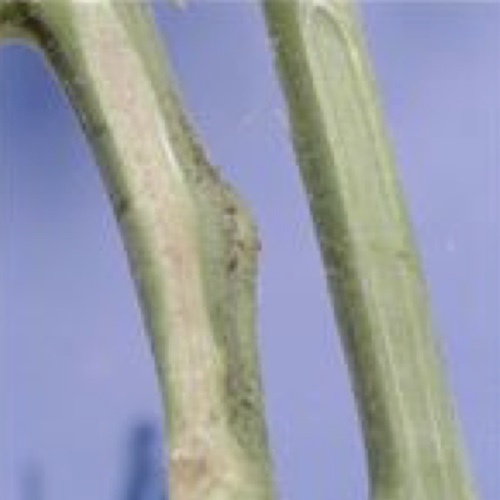
Knowledge Hub
Fusarium wilt
Prevention and Control
Prevention
- Extract seeds from healthy fruits
- Avoid planting on land with history of wilt disease
- Rotate nursery site each season and maintain good drainage
- Destroy plant debris immediately after harvest by burning
- Solarise soil using plastic sheets 6 - 8 weeks before planting
- Practise long crop rotation - 6 years with non-solanaceous plants (e.g.cereals and grains-maize, millet) after every 3 seasons
- Reduce injury to crop roots as wounds are entry points of wilt pathogen
- Disinfect farm tools with 10% bleach solution after working in infected soils
- There is an interaction between nematodes (especially root knot nematodes) and Fusarium wilt so avoid planting in sites where nematode damage has occurred
Monitoring
- Monitor field weekly for symptoms of wilt soon after transplanting. Look for yellowing and wilting of leaves and stems, often only affecting one side of the plant
- Look for wilted leaves which dry up and turn brown
- Uproot and cut the stem lengthwise, internal dark-brown to dark-red discolouration can been seen when the fungus is present
- There may also be damage to the root system
- Take action as soon as the first symptoms are seen
Direct control
- Rogue out and destroy plants that show early symptoms of the disease and destroy by burning
- Prevention is main method of controlling this disease(see prevention)
Search
Activities
Downloads
© 2024 Safer Spice. All rights reserved.

 BACKGROUND
BACKGROUND




